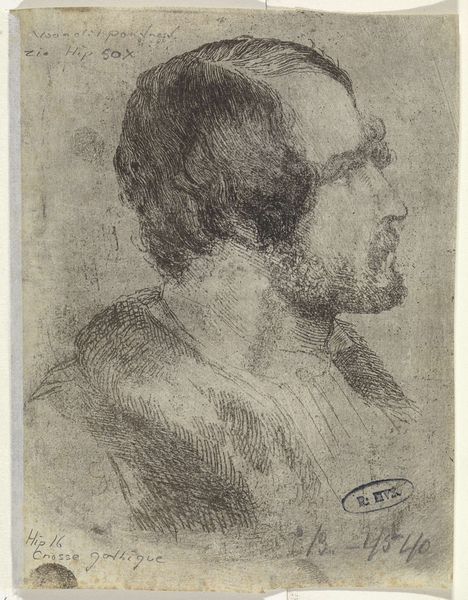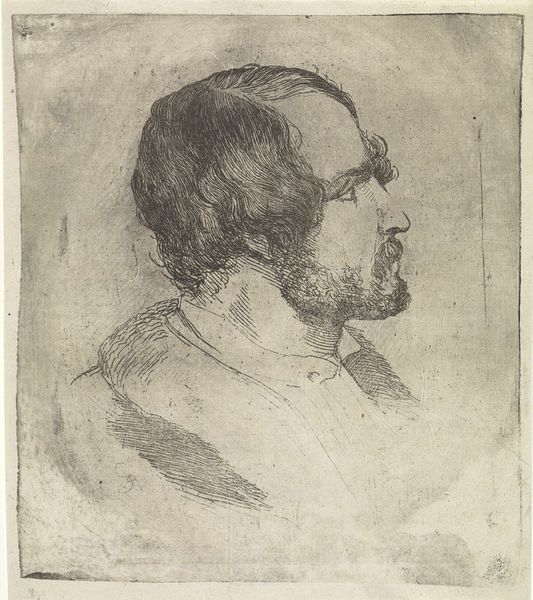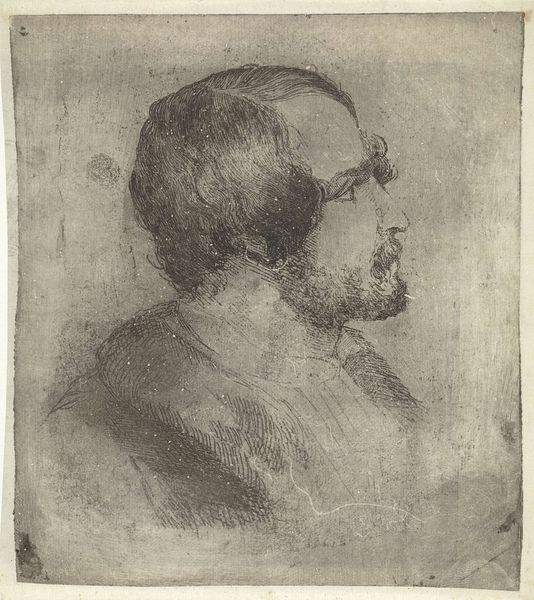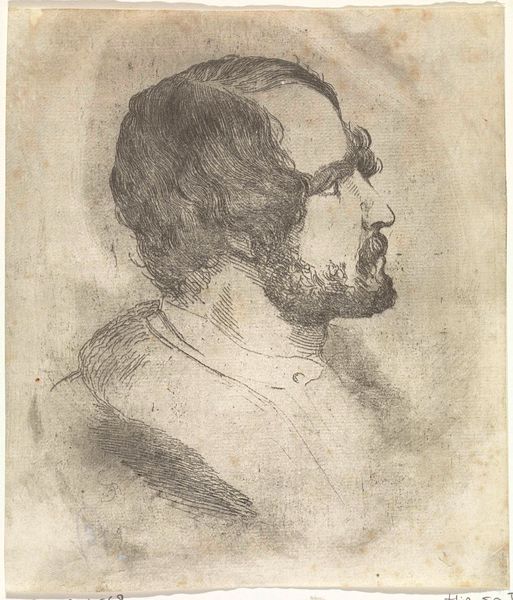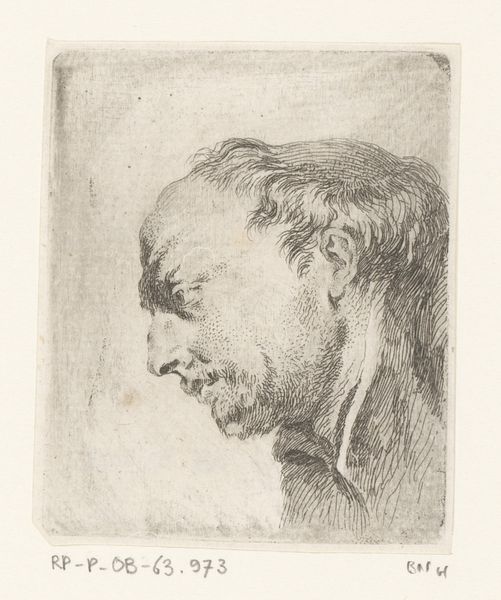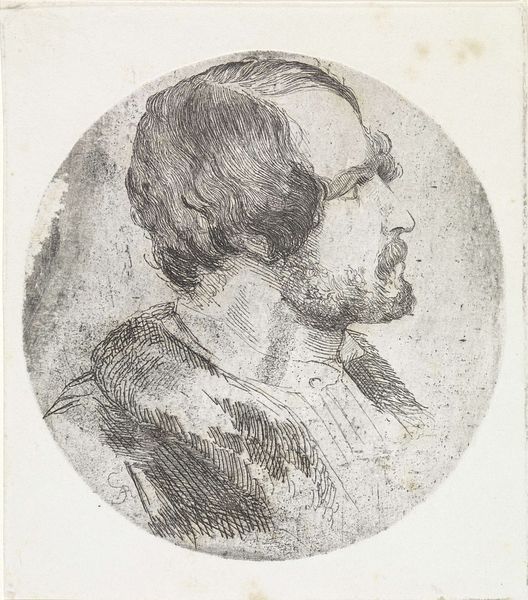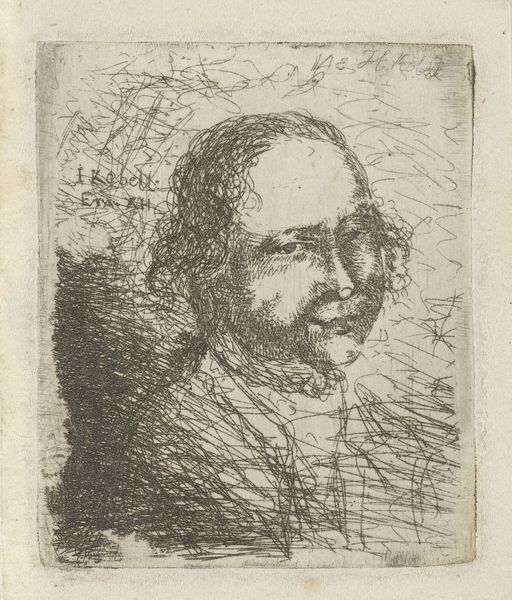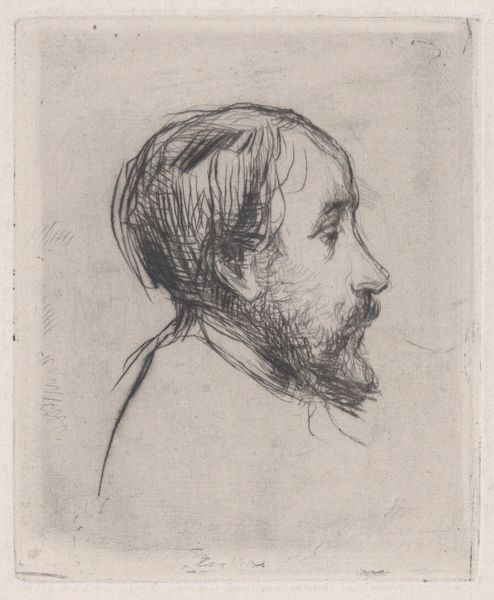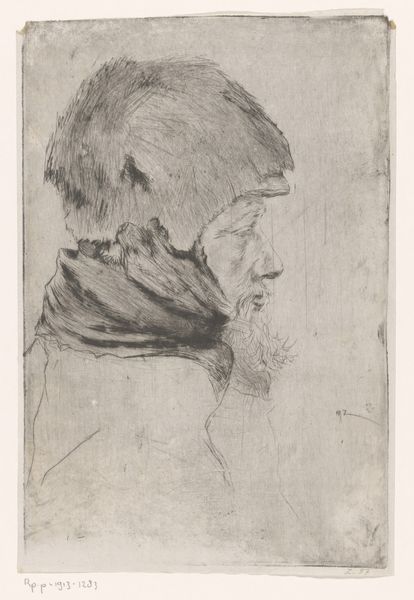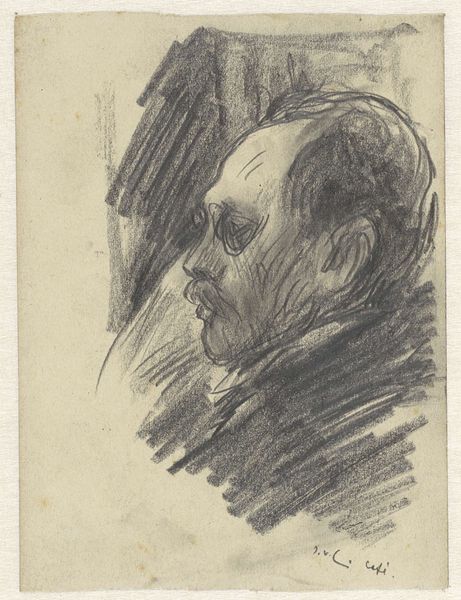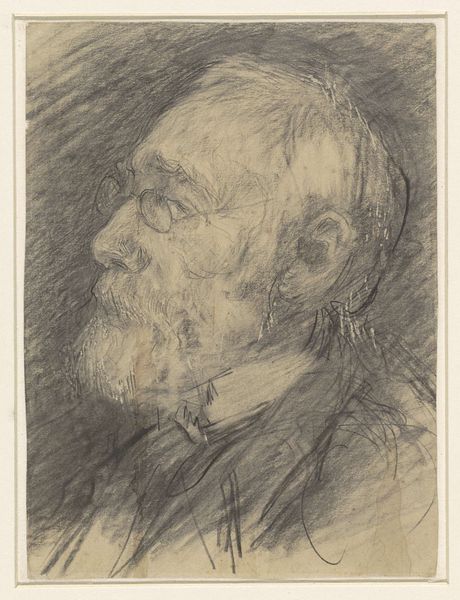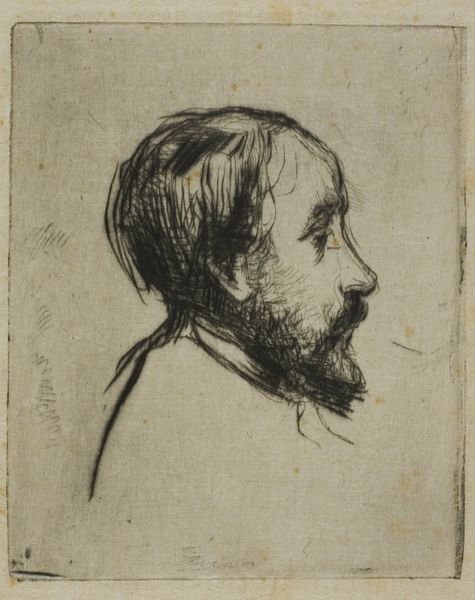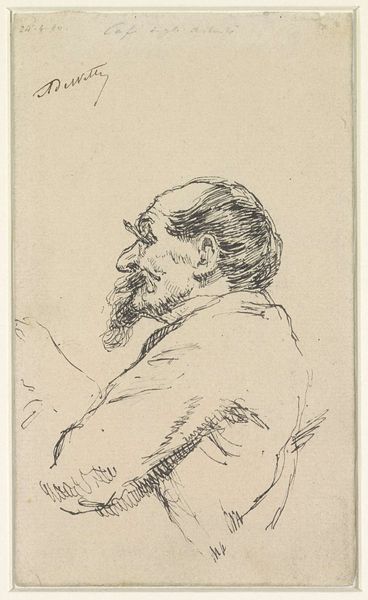
print, etching
#
portrait
# print
#
etching
#
realism
Dimensions: height 159 mm, width 140 mm
Copyright: Rijks Museum: Open Domain
Editor: This is a portrait of the printmaker Alexander Schaepkens, made after 1857, using etching as a medium. It’s incredibly detailed for a print, you can really see the textures. What stands out to you about this piece? Curator: What grabs me immediately is the material process of etching itself. Think of the artist laboring over a metal plate, using acid to eat away at the design, building up those textures you mentioned. This wasn’t simply about capturing a likeness; it was a deeply involved, material act. Do you think this connects to what Alexander Schaepkens himself did as a printmaker? Editor: That's a great point! It makes you wonder if it was made by another printmaker paying homage? Etching allows for reproducibility but at the expense of time. The act of replication seems important to highlight printmaking as work in and of itself. Curator: Precisely. Think about the socio-economic implications. Printmaking, especially etching, democratized art in a way. It was a means of producing images on a scale and with detail previously unimaginable, but, how does this contrast with painting? Is it high art or is it low art? It has that effect, I think! The print shares likeness with realism, how do we reconcile that? Editor: It’s fascinating how the choice of medium and technique opens up all these questions about artistic value and social context. I hadn't considered the democratization aspect before. Curator: Exactly! So often we're caught up in aesthetic judgments, but analyzing the means of production gives us a far richer understanding. Material speaks to the work involved, doesn't it? Editor: Yes, now when I look at this, I see layers of artistic intention but also material conditions coming together. Thanks! Curator: You got it! Thinking about art this way brings a totally different and interesting way to consider other pieces, too!
Comments
No comments
Be the first to comment and join the conversation on the ultimate creative platform.
